This post is Part II of a two-part series on my time spent in Athens, Greece (read Part I here). Part II covers my second day in Athens including lots of gold, sculpture, ruins… and pita wraps!
Here we are on day 2 of our excellent adventure in Greece, still in Athens with plenty more planned ahead.
Whereas the day before we went for a cheese pie for breakfast, this time we went for another staple breakfast snack, Bougatsa! Sweet or savoury, Bougatsa is essentially a pastry made with phyllo dough and stuffed with a filling. We tried two types: one filled with cheese, and the other filled with custard (usually with powdered sugar on the top). I really liked the cheese one because the pastry is still sweet, but the cheese balances out the sweetness. But, hey, if you have an extreme sweet tooth, go for the custard!


And so we were charged (aka full) and ready for another excellent day in Athens. Unfortunately, we were quite unlucky with the weather for the first half of our trip to Greece. A cold spell was ripping through the country, and so we were in large puffy winter coats while sometimes walking in the rain. While our first day in Athens was at least sunny, our second day clearly reminded us that Greece was going through a weird time weather-wise. Despite the on and off rain, it was the perfect day to visit a couple of museums!
National Archaeological Museum
As we were planning our trip to all these archaeological sites around Greece, I knew we had to go see all the good stuff stored at the National Archaeological Museum. It’s the largest archaeological museum in Greece and contains the richest collection of Greek Antiquity artefacts worldwide.
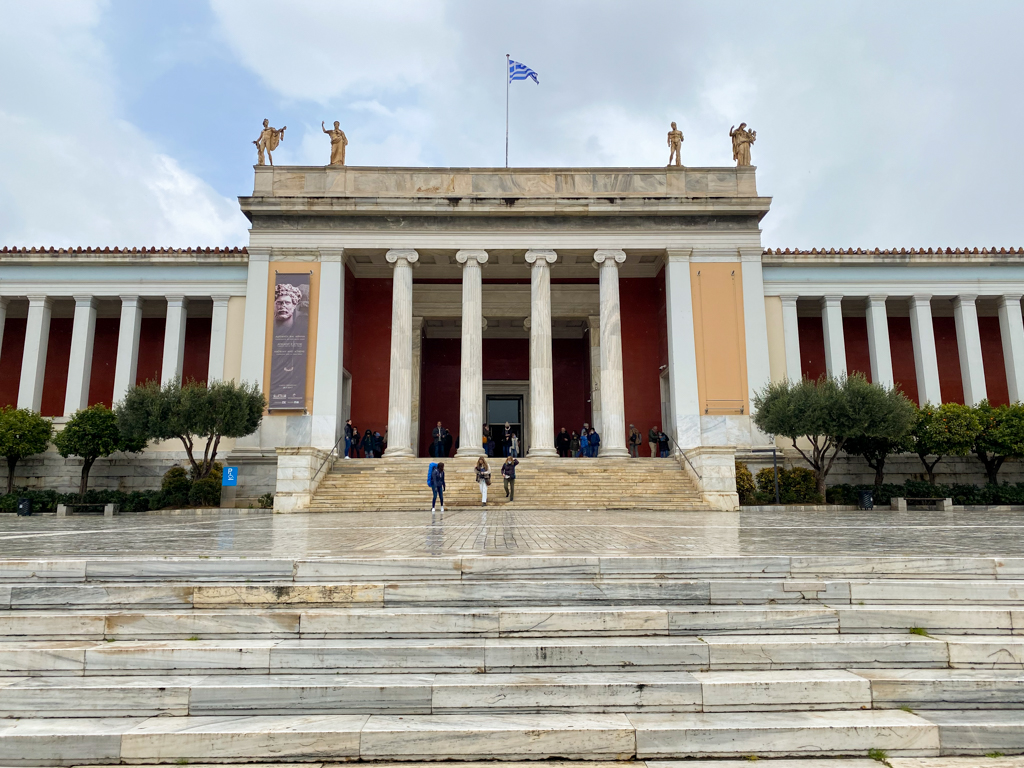 The collection of Mycenaean antiquities includes the gold death mask, known as the ‘mask of Agamemnon’. Homer famously described the settlement of Mycenae as ‘rich in gold’; indeed, this collection shows just that. Countless amounts of gold pieces were found in grave circles, indicating the immense wealth in the area.
The collection of Mycenaean antiquities includes the gold death mask, known as the ‘mask of Agamemnon’. Homer famously described the settlement of Mycenae as ‘rich in gold’; indeed, this collection shows just that. Countless amounts of gold pieces were found in grave circles, indicating the immense wealth in the area.


The Sculpture Collection, with its rich and unique exhibits, presents the evolution of ancient Greek sculpture from 700 BC to the 5th century AD. It’s really interesting to see the development of sculpture and also how Greek mythology takes a more physical form in art.
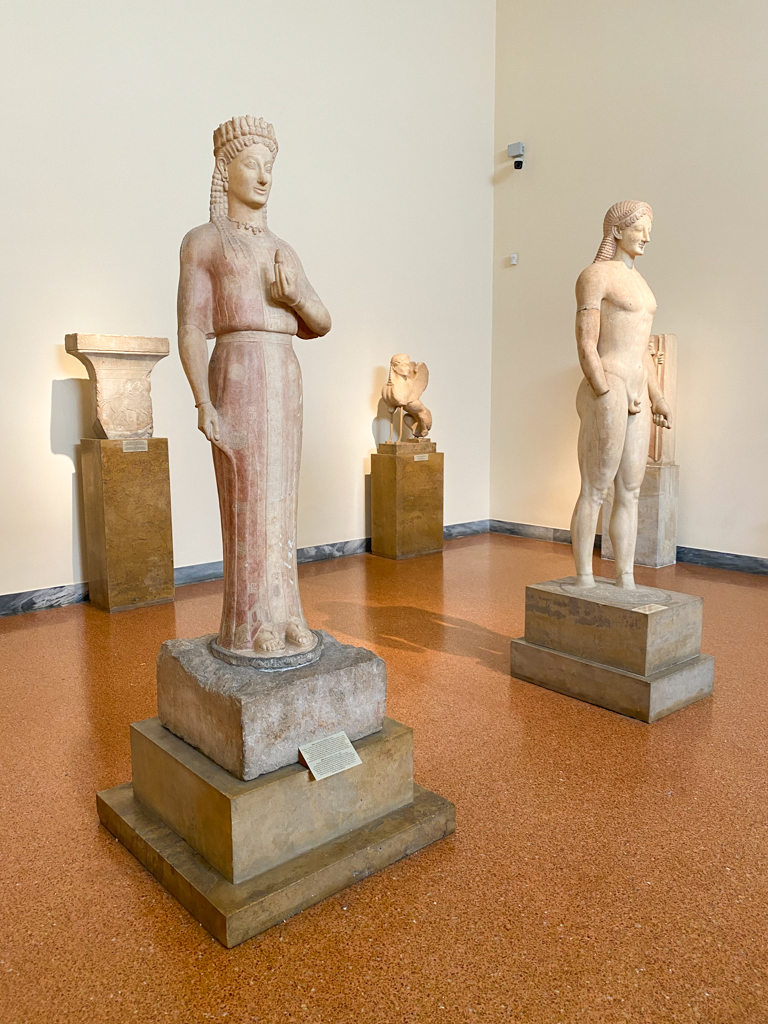
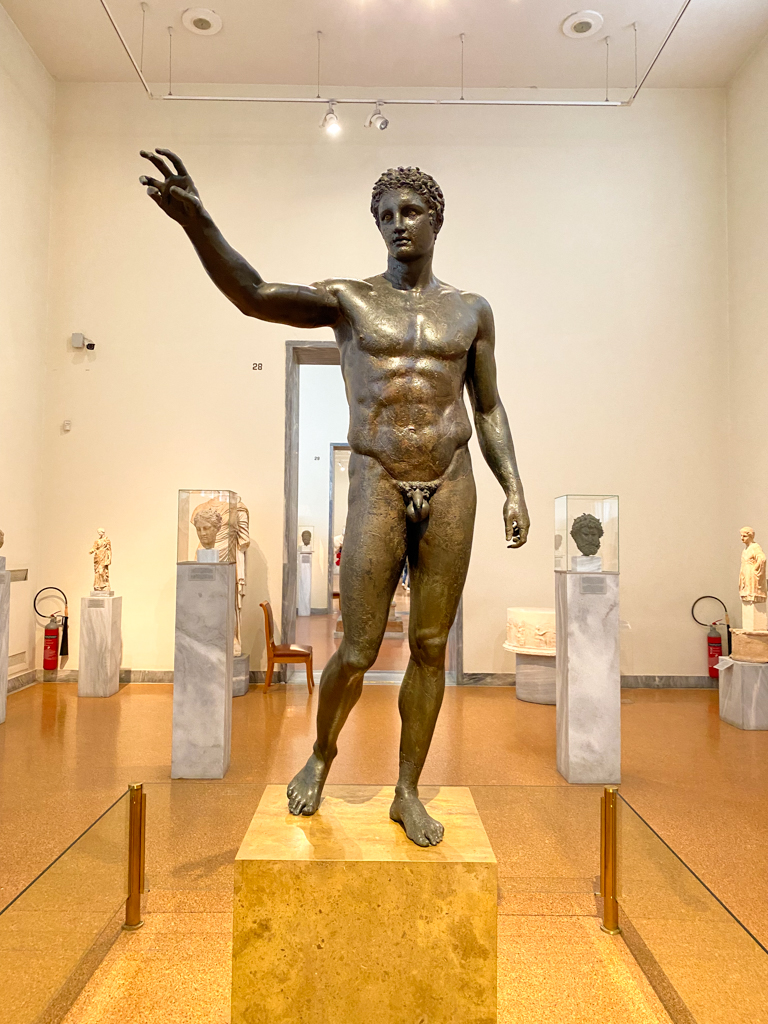
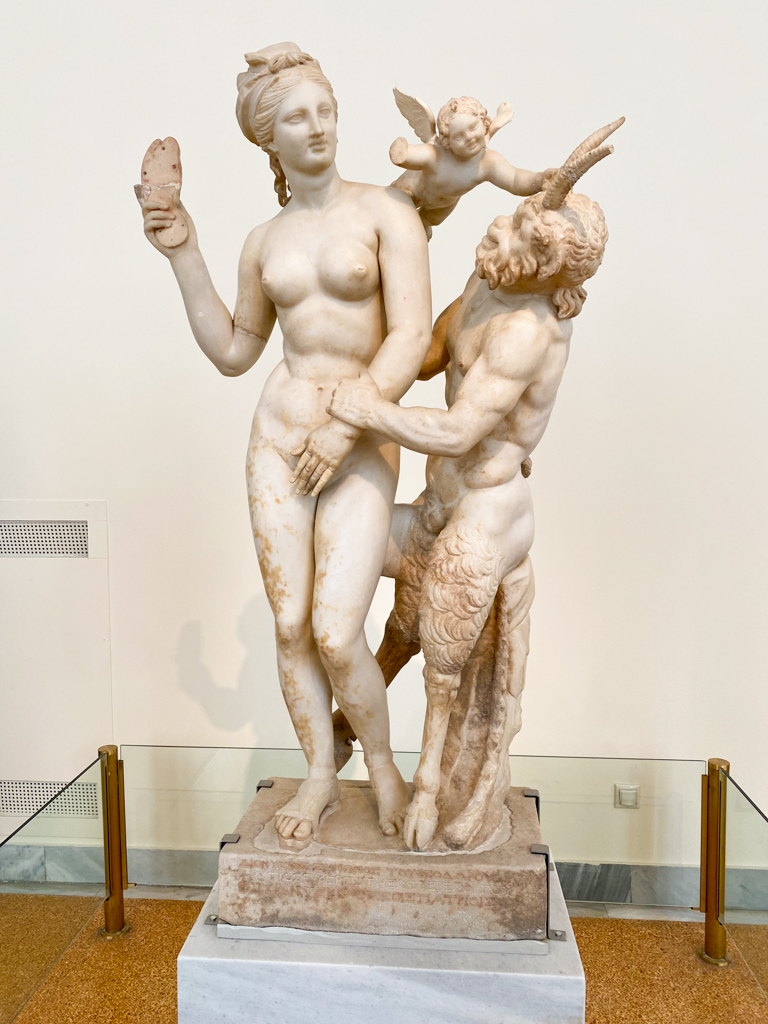

More Archaeological Sites
If you buy the multi-site ticket for the Acropolis, you get access to several other archaeological sites across the city. While during the off-season there is no discount, I found it was still handy to have the multi-site ticket because you just scanned the ticket at each entrance and boom, you were in! I didn’t envy everyone that had to line up to pay at each site.
And so, our first site beyond the Acropolis was Hadrian’s Library. This is the largest remaining building built by Hadrian. The building was actually not just a library, but the library housed hundreds of papyrus rolls (aka ancient books).
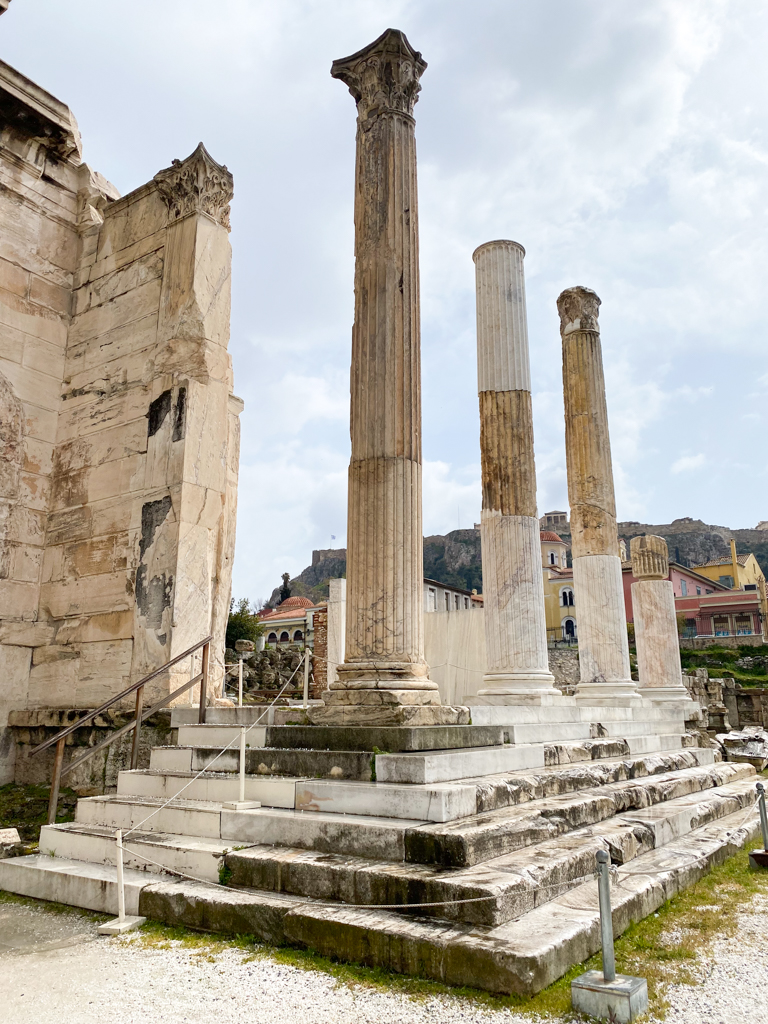
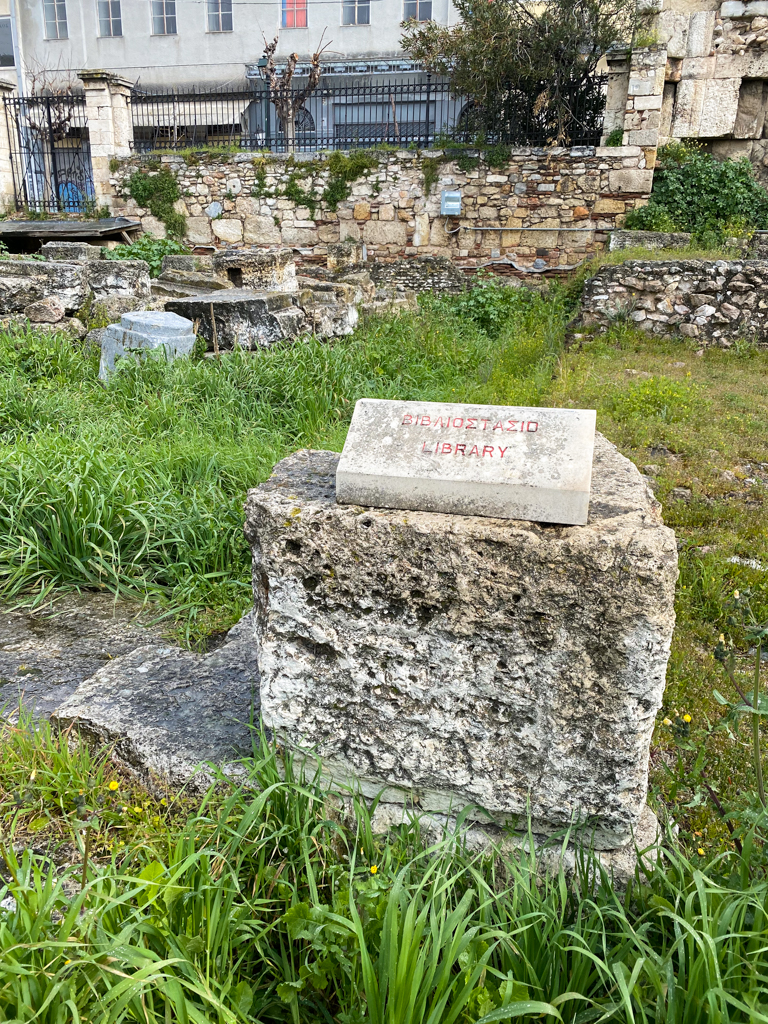
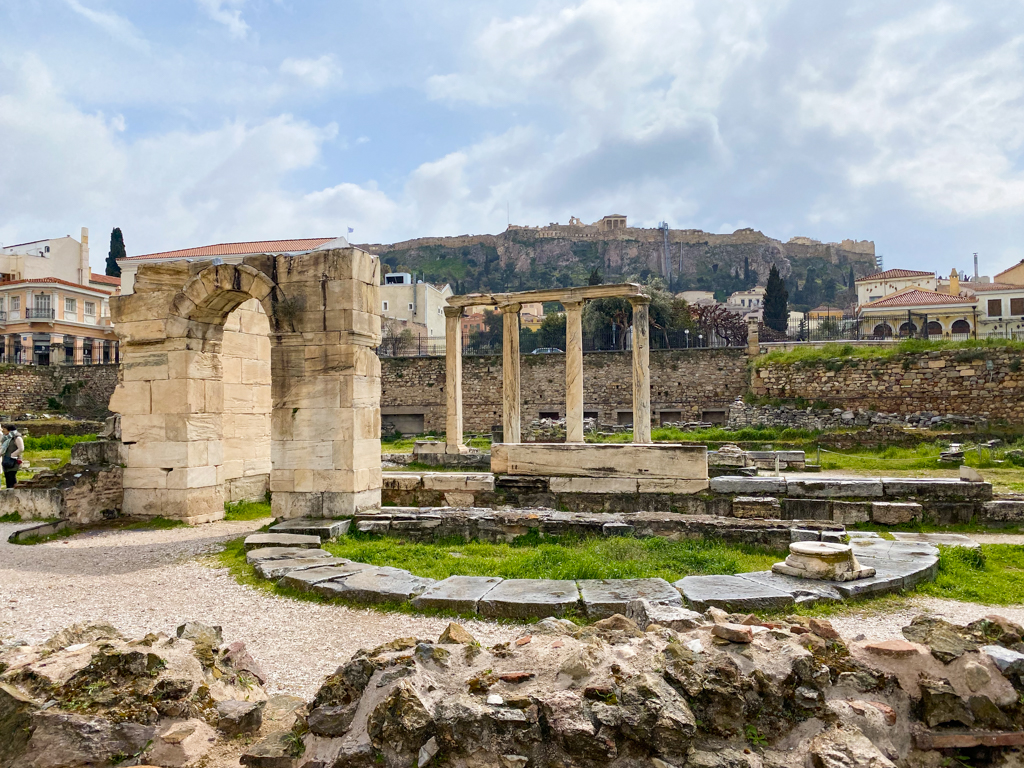
We then moved on to the Ancient Agora. An agora is a central public space in ancient Greek city-states, so this was the very heart and centre of ancient Athens. Absolutely everything happened here, whether it was trade, speeches, religious festivals… you name it. It’s incredibly inspiring to walk through the ruins of the agora and think about how bustling this place must have been thousands of years ago.



 From the Ancient Greek agora, we walked over to the Roman Agora. This agora was constructed in the 1st century BC with funds from Julius Ceasar and Augustus. It was primarily used as an open marketplace. The site was closed by the time we made it over there in the late afternoon, but we could still see quite a bit of bit from outside the gates. I should also mention that at this point it was pouring rain, so we thought it was a good time to stop for lunch!
From the Ancient Greek agora, we walked over to the Roman Agora. This agora was constructed in the 1st century BC with funds from Julius Ceasar and Augustus. It was primarily used as an open marketplace. The site was closed by the time we made it over there in the late afternoon, but we could still see quite a bit of bit from outside the gates. I should also mention that at this point it was pouring rain, so we thought it was a good time to stop for lunch!
We opted for pita wraps at hoocut. Their menu is simple, being just pita wraps and fries, but what’s awesome is that they not only have your typical meat offerings (pork, chicken, beef) but also dolmas and squid for vegetarians and pescatarians, respectively. I opted for the dolmas (rice stuffed grape leaves) and it was delicious! I was so happy I could try out a pitta, despite being a pescatarian.


Acropolis Museum
Once again, we were tired so we went back to the hotel to rest. After an hour or so we were at our second museum stop, the Acropolis Museum. Opening in 2009, the Acropolis Museum is a museum focused on the findings of the archaeological site of the Acropolis of Athens.
 The most striking aspect of the museum is the design. After a country-wide competition, Bernard Tschumi was selected as the winning project. His design revolved around three concepts: light, movement, and a tectonic and programmatic element.
The most striking aspect of the museum is the design. After a country-wide competition, Bernard Tschumi was selected as the winning project. His design revolved around three concepts: light, movement, and a tectonic and programmatic element.
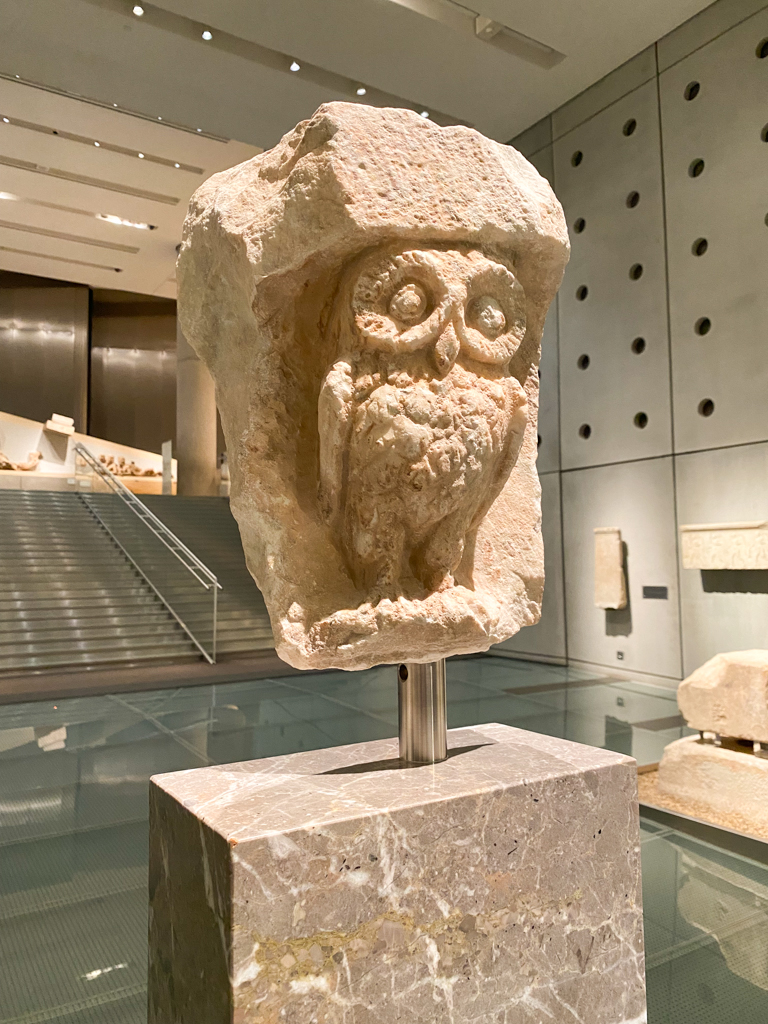
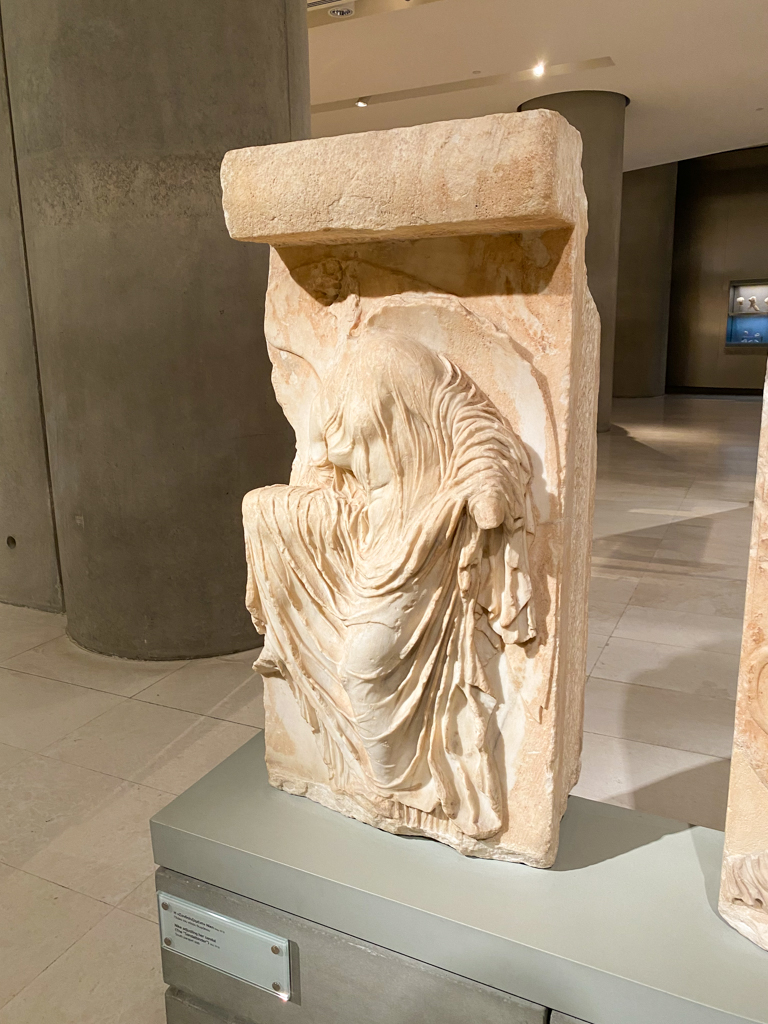
One of my favourite areas had five of the six Korai (also known as Karyatids) that supported the roof of the south porch of the Erechtheion, instead of columns. It was really neat to see the replicas at the ancient site (see photo below for reference), and then see the real ones at the museum and how beautiful they are.

 Despite all the fantastic areas of the museum, the most spectacular part is the Parthenon Gallery. The space is arranged in the form of a glass-walled chamber that wraps around a rectangular core. The orientation and dimensions match those of the Parthenon’s original cella. In addition, as the walls are all made of glass, you can see the view from the third floor, one side being a view of the actual Parthenon on the Acropolis. It really is an incredible space and it honestly was one of the most awe-inspiring museum spaces I’ve ever visited.
Despite all the fantastic areas of the museum, the most spectacular part is the Parthenon Gallery. The space is arranged in the form of a glass-walled chamber that wraps around a rectangular core. The orientation and dimensions match those of the Parthenon’s original cella. In addition, as the walls are all made of glass, you can see the view from the third floor, one side being a view of the actual Parthenon on the Acropolis. It really is an incredible space and it honestly was one of the most awe-inspiring museum spaces I’ve ever visited.
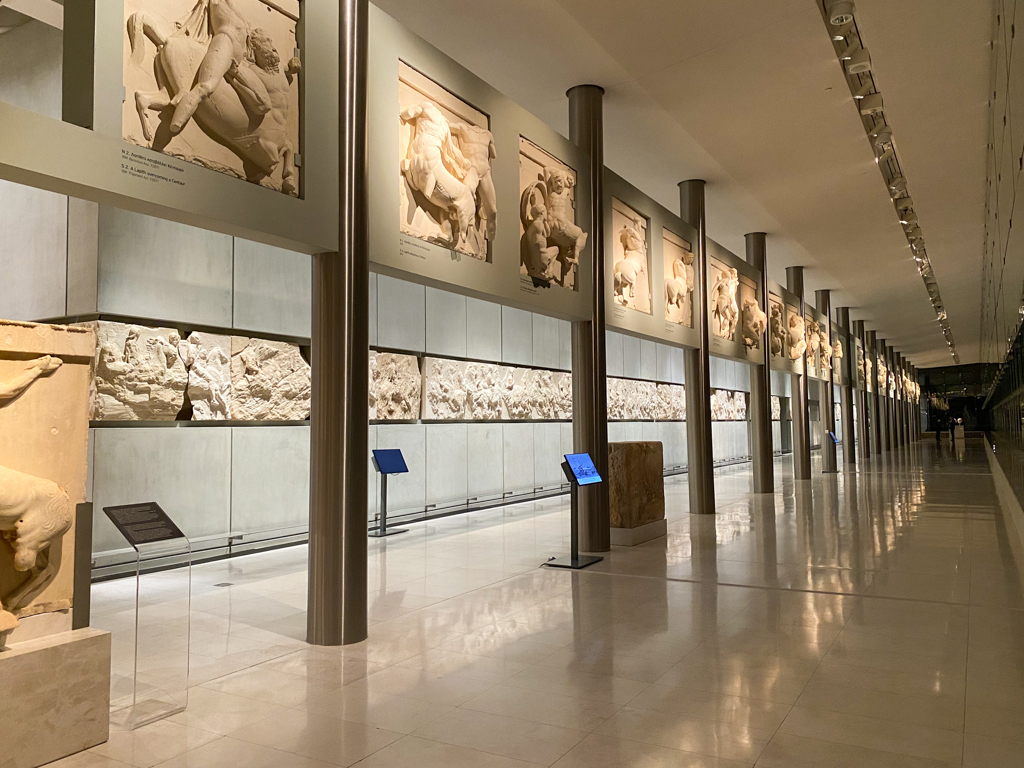
 After all that absorbing of information, it was time for some more food. We had previously selected a restaurant for dinner, but we quickly realized that we should have definitely made a reservation ahead of time. And, as expected, when we tried to get a table we were met with a resounding no. We instead went to a fish restaurant called Aiolou 68. Now, Sunday evening is not the *best* time to be looking for fresh fish as restaurants are careful only to buy enough for Sunday as they’ll likely be closed on Monday (maybe even Tuesday too). Nonetheless, the restaurant still had plenty of staple fish choices like anchovies and sardines. All in all, we were very grateful to this restaurant for serving us, hopeless tourists. The food was really good too!
After all that absorbing of information, it was time for some more food. We had previously selected a restaurant for dinner, but we quickly realized that we should have definitely made a reservation ahead of time. And, as expected, when we tried to get a table we were met with a resounding no. We instead went to a fish restaurant called Aiolou 68. Now, Sunday evening is not the *best* time to be looking for fresh fish as restaurants are careful only to buy enough for Sunday as they’ll likely be closed on Monday (maybe even Tuesday too). Nonetheless, the restaurant still had plenty of staple fish choices like anchovies and sardines. All in all, we were very grateful to this restaurant for serving us, hopeless tourists. The food was really good too!


This final meal in Athens wrapped up this part of the trip. We made our way to the hotel, packed and went sound asleep to prepare for the next chapter of our great adventure in Greece.
Top Tips
Before we wrap up in Athens, here are some of my top tips that I wish I had known in advance:
- When staying in a hotel, make sure you’re staying on a floor higher than the first floor. There are bars and clubs all over the city, so the chances are quite high that staying on the first floor will result in a poor night’s sleep.
- March can be pretty cold, so make sure to check the weather carefully. If in doubt, pack for all seasons (even winter, it can snow!).
- Taxis operate by their own rules. It’s up to you whether you think it’s worth the hassle of having to insist on the fixed fare. Sometimes, it’s better just to give the taxi drivers a couple of extra euros they’re insisting on and let them be on their merry way.
- When visiting the Acropolis, make sure you buy your tickets ahead online. The official ticket website is a bit difficult to find, so here’s the link. From here you need to decide whether you just want to visit the Acropolis (and the slopes) or the Acropolis plus six other archaeological sites in Athens. If you prefer the latter, I highly recommend purchasing the combination ticket. In the summer months, it’s a better deal to buy the combination ticket compared to individual site tickets. If you’re going in the winter, the combo ticket is 2 euros more expensive than buying individual site tickets, however, your combo ticket can be used at any site and you enter a site by scanning your ticket. This means you never have to wait in any lines, so it’s a lot easier and more convenient to use. In addition, individual site tickets are only valid on the date you select. With the combo ticket, you can start using it within five days of your selected date and you have five days to visit the sites. This means that you can be a lot more flexible with planning which sites to visit on which day.
- During the winter season (1 Nov to 31 March), most sites will close by 3:30pm so make sure you plan your days with early starts.
- If you’re starting to feel tired from walking, do try out the metro. It’s really easy to use and is a great way to travel up and down the city. The ticket machines can be operated in several languages.
- You should think of the Acropolis and the Acropolis Museum as glued together. You can’t visit one without the other.
- Do you need to visit both museums? If you’re planning to visit any other archaeological sites in Greece outside Athens, then it’s vital that you make time to go to the National Archaeological Museum. If you’re only staying in Athens and only for a short time, then choose the Acropolis Museum.
- Greek coffee culture is a thing in itself, but if you’re like me and only like to drink espresso-based coffee, then steer clear of frappés. A frappé is an iced coffee drink made with instant coffee. Instead, try a freddo! A freddo is similar, but it’s made with double espresso instead of instant coffee. It’s so much better!
- The lunch and dinner times in Greece may differ from what you’re used to. Lunch typically starts between 2 and 3pm and dinner, 9 and 10pm, so plan accordingly. Of course, many restaurants will cater to tourist eating times, but to me, that’s always a bad sign.
- Greeks are generally really friendly, so if you’re in doubt or need some help, don’t be afraid to ask.
- And finally, enjoy your time in this amazing city!
Have you visited any museums or sites in Athens? What did you think of the ancient capital?



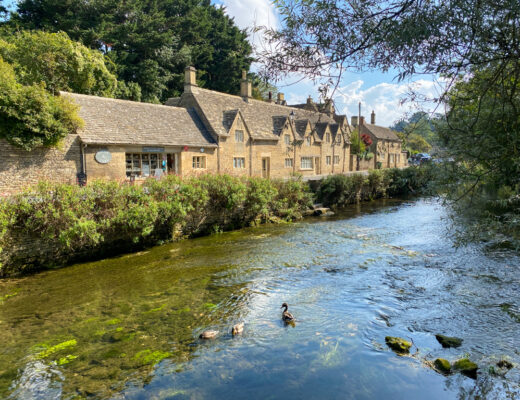
No Comments